Indoor LED Display for Sale
Indoor LED display refers to electronic LED display that is specially used in indoor places, such as churches, conference rooms, restaurants, hotels, etc.
There are many choices for indoor LED display, such as different pixel pitches (P1.5, P2.5), different sizes, different packaging methods (SMD, COB), different accessory brands (lamp beads, power supply), all of which can affect your choice of indoor LED display.
Why not follow Unify LED screen supplier to learn about the following products and knowledge about indoor LED display.
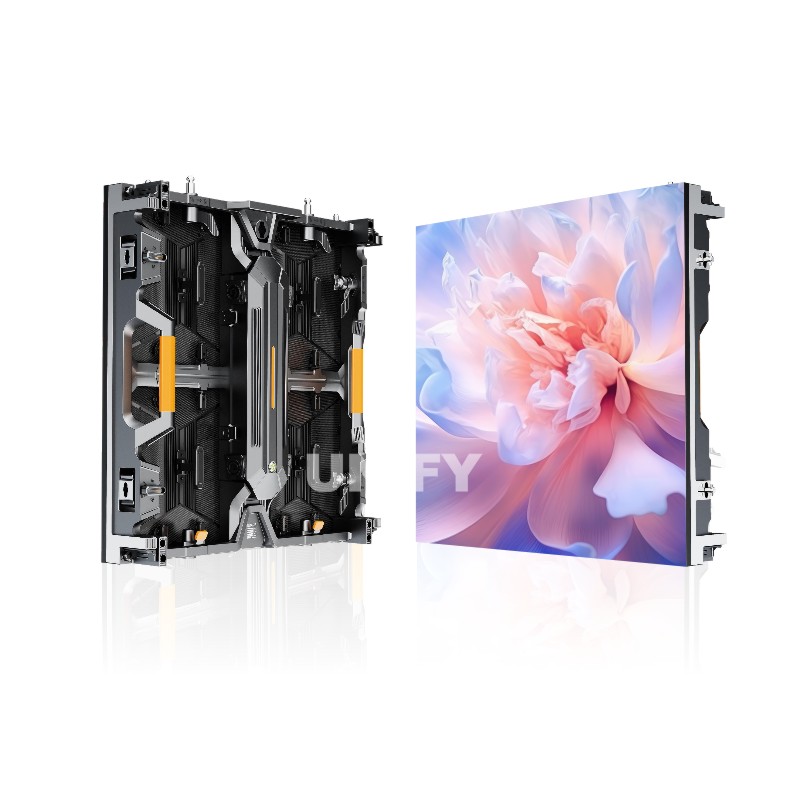
Event LED Display- Enova pro Series
Event LED Display -Enova pro Series Cabinet weight:7.5kg Refresh rate: 3840HZ hard connection box Pixel pitch: P2.604 P2.97 P3.91 P4.8mm
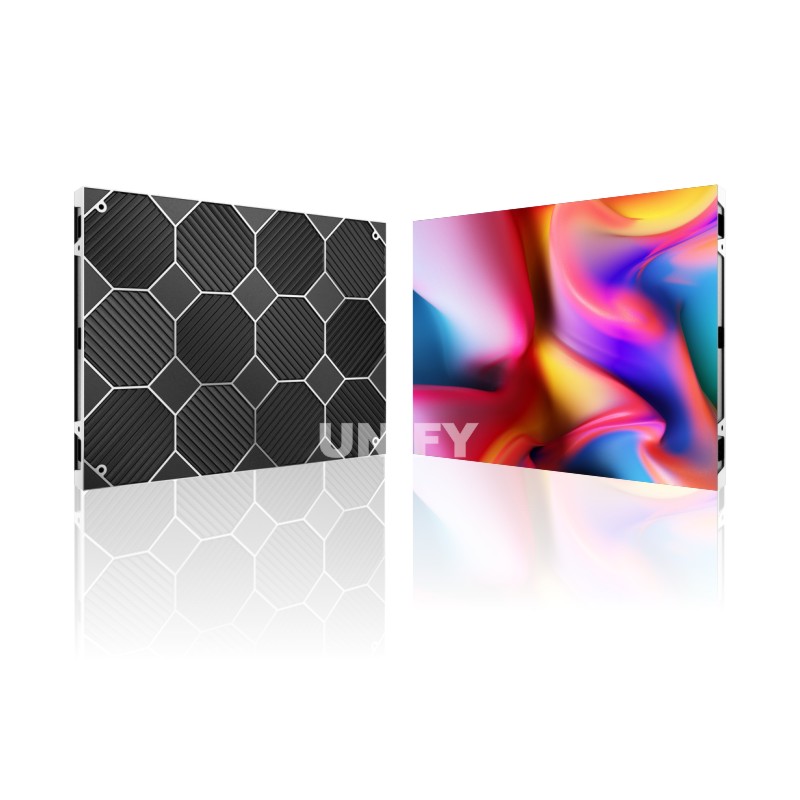
Front Service LED Screen EDI Series
Front Service LED Screen-EDI Series -P1.25/P1.5/P1.8/P2/P2.5/P3mm -Panel size 640*480mm, Module size 320*160mm -Ultra-lightweight and Space-saving -Wireless hard connection design -Support

High-end Indoor LED Screen Ehonor Series
High-end Indoor LED Screen Ehonor -P1.25/P1.5/P1.8/P2/P2.5/P3mm -Panel size 480*360mm, Module size 320*160mm -Ultra-lightweight and Space-saving-Innovative Structural Design-Support Creative Shapes Horizontal
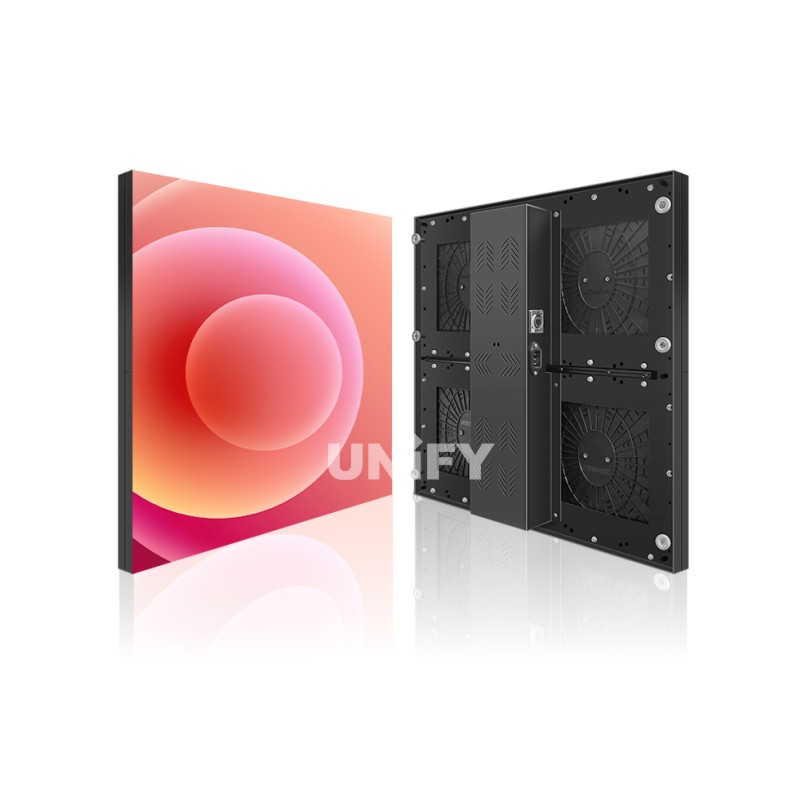
Indoor Fixed Screen- H Series
Indoor Fixed Screen -H Series High resolution & vibrant colors Seamless splicing & ultra-thin design Wide viewing angle & low
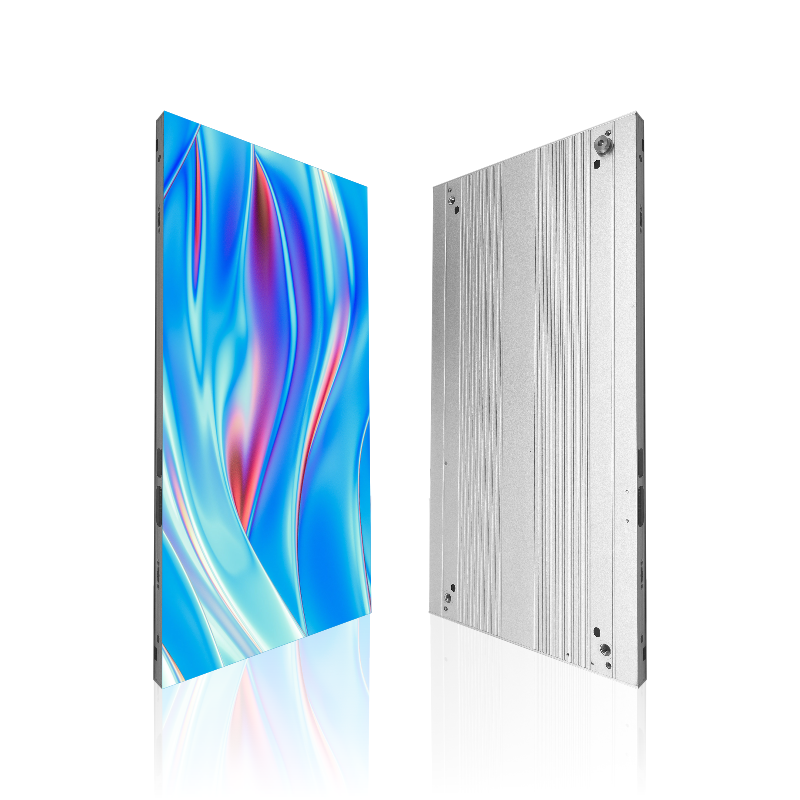
Indoor LED Wall – Ulight Series
Indoor LED Wall -Ulight Series -P0.9/1.25/P1.5/P1.8/P2/P2.5mm -Panel size 250*500mm, Module size 250*250mm -Ultra-lightweight and Space-saving -Wireless hard connection design -Support
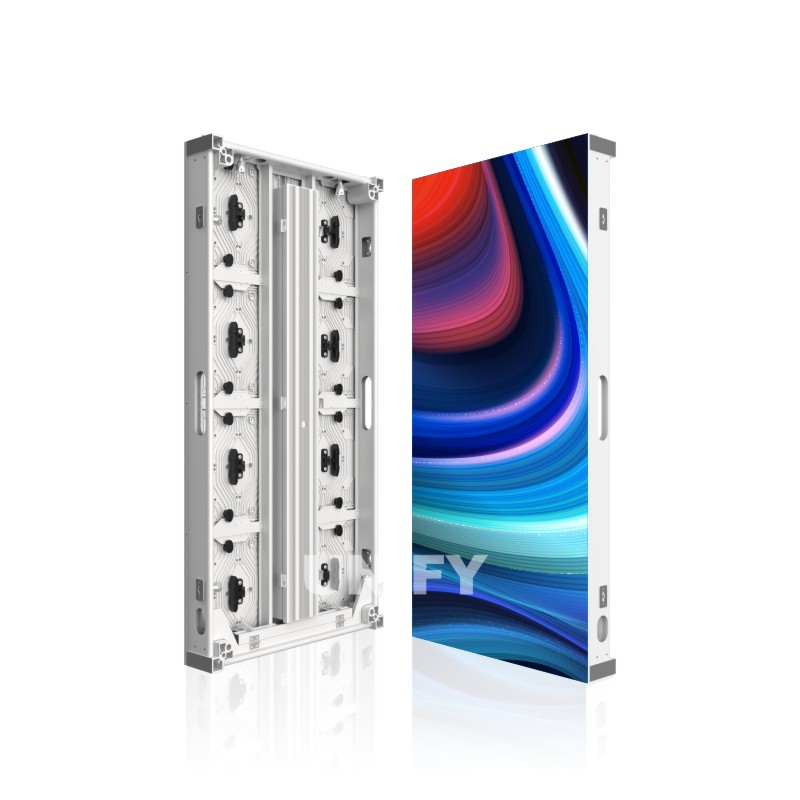
Rental LED Panel -RS series
Rental LED Panel-RS Series Cabinet weight:7.5kg Refresh rate: 3840HZ hard connection box Pixel pitch: P2.604 P2.97 P3.91 P4.8mm Material: strong
What can Indoor LED screen bring you
Indoor LED display screens can bring obvious value to buyers through picture quality performance, information transmission, space optimization and brand image enhancement.
First of all, it has high-definition and delicate picture presentation, and can accurately restore images, text and video content. It is suitable for various scenarios such as conference room presentation, KTV song playback, exhibition hall dynamic display, etc.
Secondly, LED screens support remote centralized management and scheduled content release, helping merchants to efficiently convey promotional information or brand stories.
In addition, its flexible installation methods (such as wall hanging, embedded, vertical) can also save space and enhance the overall modern sense of the venue. Through these comprehensive advantages, indoor LED display screens not only enhance the visual experience, but also become an important tool for the digital upgrade of commercial space.
How to Choose the Pixel Pitch of Indoor LED Display?
P1.5 LED Screen
COB packaging technology, better protection
Sufficient budget/high requirements for the venue screen
P1.8 LED Display
P2.5 LED Display
It can not only meet the needs of close-up viewing, but also has a more cost-effective configuration. Suitable for customers who pursue clarity and consider budget
P3.91 LED Display
It is widely used in indoor environments such as stage backgrounds, exhibitions, shopping mall atriums, conferences and activities where the viewing distance is not so close.
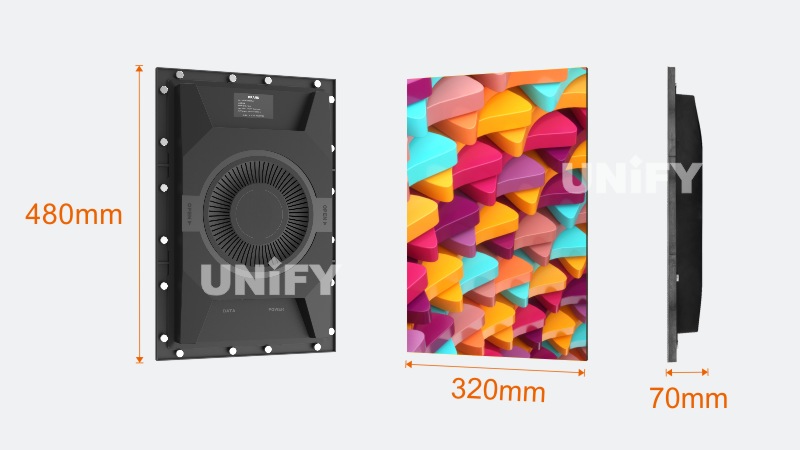
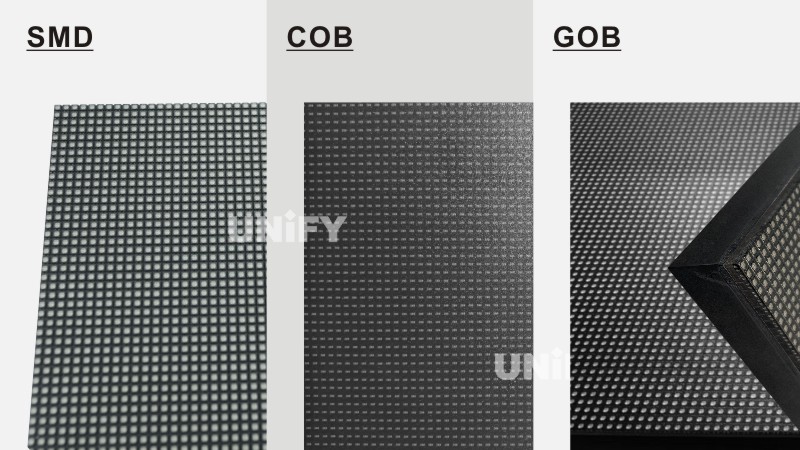
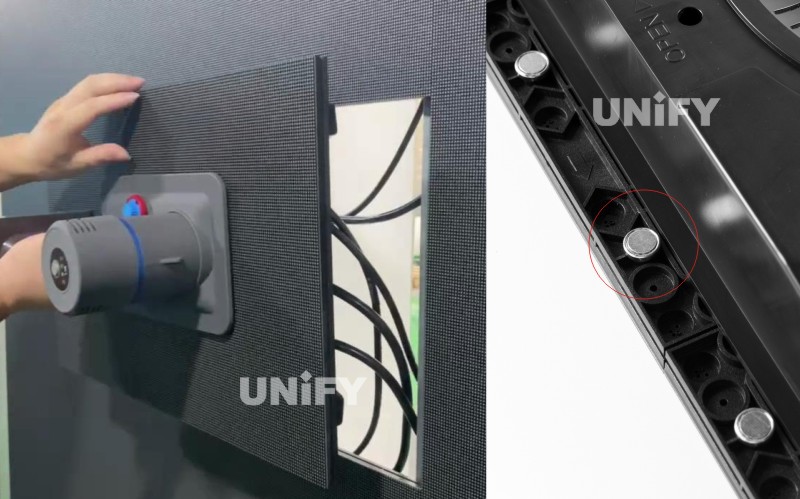
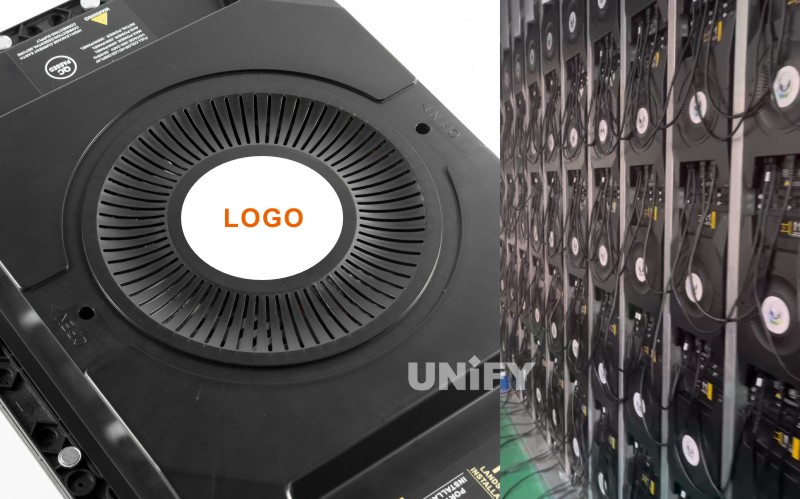
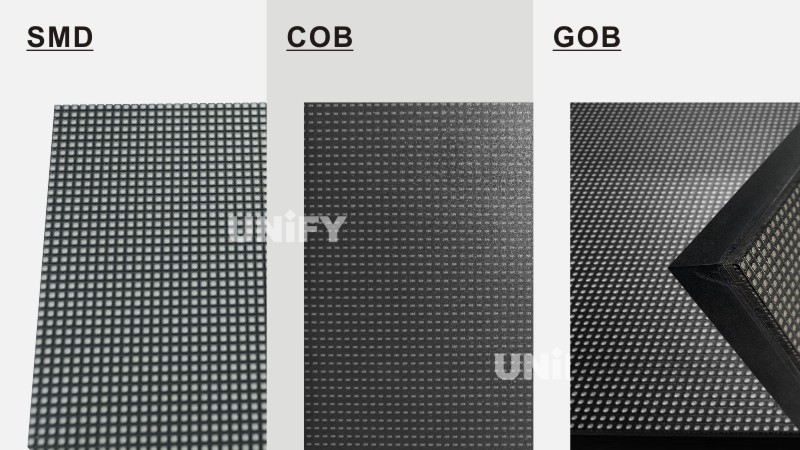
High-end Indoor LED Screen-Ehonor
- P1.5/ P1.8/ P2.5 /P3
- 16 strong magnets per panel
- Support posting your brand logo
- High-definition display, bright colors, seamless splicing
The self-developed screen ensures high-definition and vivid colors while reducing costs. Currently, it has the highest sales volume and is widely used in churches, shopping malls, clubs, etc.
Ultra-thin Indoor LED Wall-Ulight
- Ultra-thin magnetic module, full front maintenance
- Lightweight cabinet, adaptable to a variety of venue structures
- High refresh rate and accurate color reproduction
- True seamless and black borderless, full picture presentation
- COB packaging, anti-collision and wear-resistant, safer to use
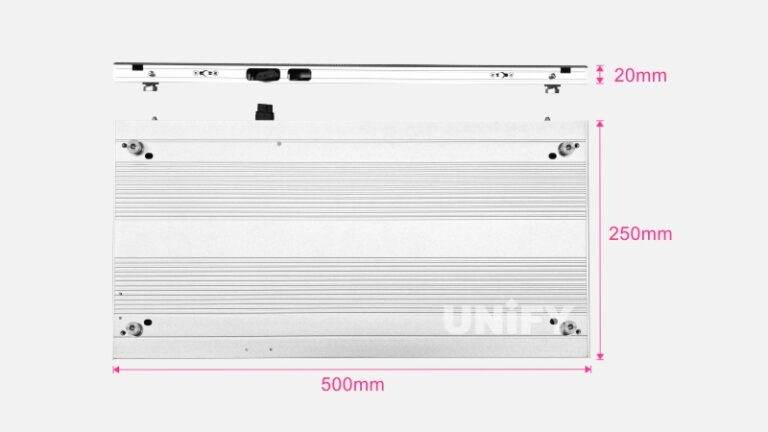
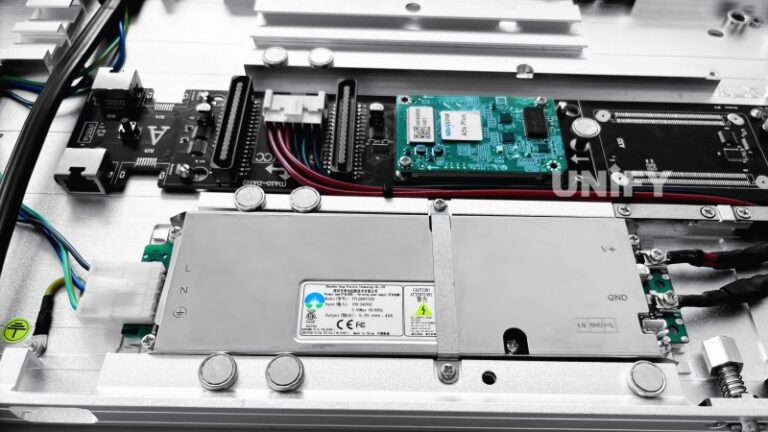
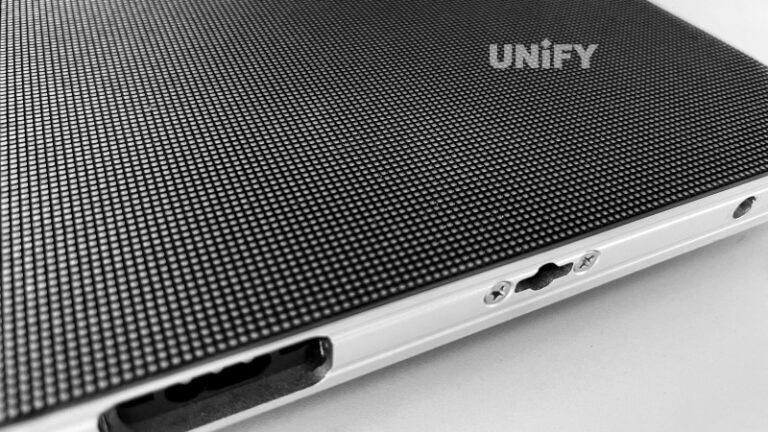
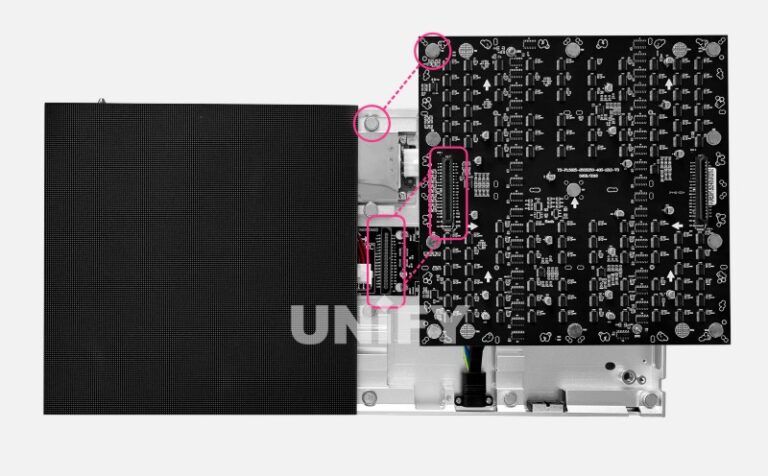
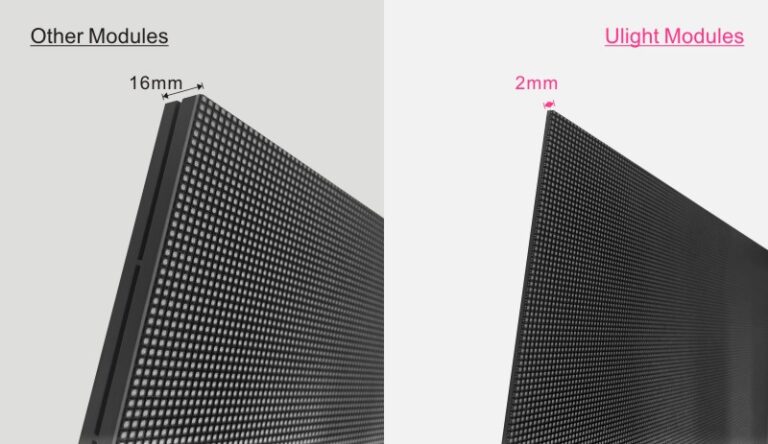
Indoor LED Display Knowledge Encyclopedia
Table of Contents
What is an indoor LED display?
Indoor LED display is a full-color electronic display device based on LED light-emitting technology, designed for indoor environments.
It achieves high-definition, continuous and stable image display through seamless splicing, and is widely used in conference rooms, exhibition halls, churches, shopping malls and other places.
Compared with traditional LCD splicing screens and projectors, LED full-color display screens have obvious advantages in brightness, color performance, service life and installation flexibility, and are particularly suitable for information-intensive and visually demanding spaces.
Basic structure and components
An indoor LED display screen usually consists of four key modules:
LED module: composed of several red, green and blue LED lamp beads, responsible for image display, is the core of picture quality performance;
Control card: receives video signals and controls each pixel to achieve synchronous display of the picture;
Power supply system: provides stable voltage and current to ensure the safety and stability of long-term operation of the equipment;
Cabinet structure: used to fix the module and other components, while affecting the heat dissipation performance, weight and maintenance convenience.
These modular designs not only improve the stability of the system, but also facilitate subsequent maintenance and upgrades.
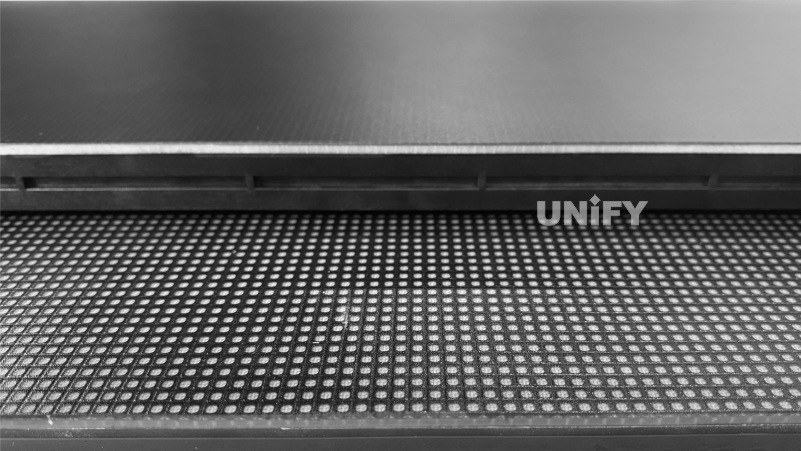
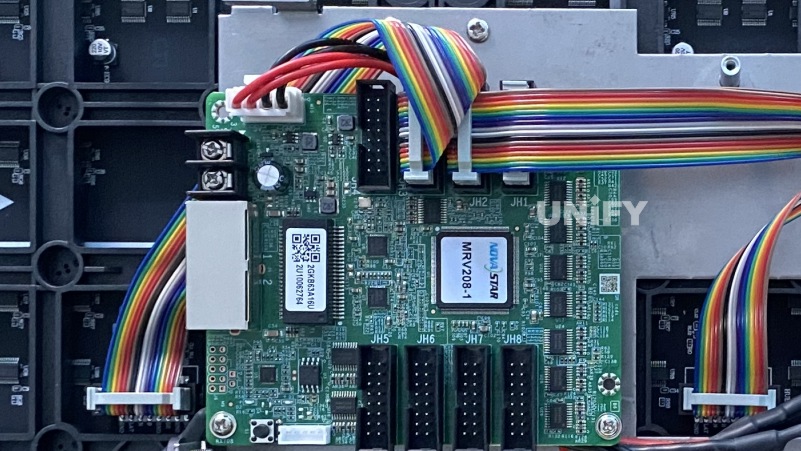

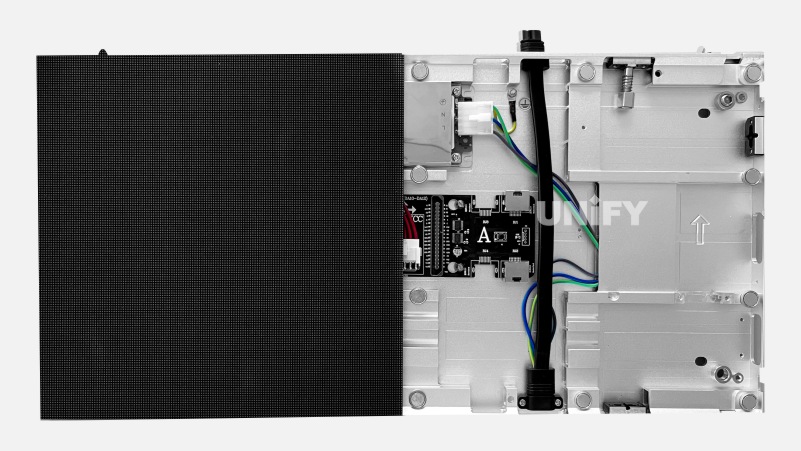
Packaging technology
The development of indoor LED display screens is inseparable from the iteration of packaging technology. The current mainstream packaging includes:
SMD packaging (Surface Mounted Device):
RGB three-color lamp beads are packaged at the same point, widely used in conventional spacing products such as P2.5 and P3.91, with mature technology and controllable costs;
COB packaging (Chip On Board):
The bare chip is directly packaged on the PCB board, with stronger impact resistance, dust resistance, and moisture resistance, suitable for small spacing and high-density scenes;
Mini LED technology:
represents the next generation of high-density display trends, with smaller pixel pitch, higher contrast and more delicate display effects, suitable for high-end conference systems, control centers and other places.
The difference between indoor and outdoor LED displays
Although indoor and outdoor LED displays seem similar in structure, both are composed of LED modules, power supplies, control systems, etc., there are essential differences between the two in design goals, performance parameters and application environments.
Indoor LED displays pay more attention to display accuracy, color fineness and viewing comfort, and are suitable for close viewing needs in closed or semi-enclosed spaces.
First, the brightness is different
Brightness of Outdoor LED screen
Outdoor LED displays usually need to reach a brightness of 4000~8000cd/m² or even higher to combat strong direct sunlight.
Brightness of Indoor LED screen
The brightness of indoor LED display screens is moderate, usually 500~800cd/m², which avoids eye irritation and is suitable for long-term viewing or meeting use.
Secondly, the pixel pitch is smaller and the display is more delicate.
Due to the closer viewing distance, indoor LED displays generally use smaller pixel pitches, such as P1.25, P1.86, P2.5, etc., to provide higher resolution and smoother image details to meet the needs of graphic display, high-definition video playback, etc.
Outdoor display screens generally use large spacing such as P4, P6, and P8 to ensure long-distance visual effects.
Furthermore, the structural protection level is different.
Outdoor LED display screens need to have a high waterproof and dustproof level (generally reaching IP65 and above) to resist environmental factors such as wind, rain, dust, and ultraviolet rays.
The protection requirements of indoor screens are relatively low, and more attention is paid to the lightness, beauty, and convenience of installation and maintenance of the screen body.
The installation methods are also different.
Indoor LED display screens often use wall hanging, wall embedding, floor, and hoisting methods, pursuing light structure, easy integration and space integration; while outdoor screens usually use fixed brackets, steel structures or floor frames, emphasizing wind and earthquake resistance.
In summary, indoor LED display screens are more sophisticated and humanized in terms of brightness adaptation, resolution, structural design, and use environment. It is not born to cope with extreme environments, but to provide a more comfortable, immersive, and stable indoor visual experience.
Core advantages of indoor LED display screens
As LED display technology continues to mature, indoor LED display screens have significantly outperformed traditional projection and LCD splicing solutions in terms of picture quality, system stability and space adaptation.
The following six core advantages make it popular in scenes such as conference systems, exhibitions, and commercial advertisements:
1. Seamless design, complete visual presentation
The seamless design enhances the visual immersion and is especially suitable for high-end exhibition halls, data visualization, command centers and other occasions with high requirements for picture consistency.
2. High-definition display, delicate and vivid picture quality
As a high-definition LED screen, indoor display screens usually support high resolution, high grayscale processing (14bit~16bit) and high refresh rate (≥1920Hz, even up to 3840Hz), which can present smoother and more delicate image details.
Whether playing dynamic videos or static graphics, the picture can remain clear and stable, suitable for professional demonstrations and brand displays.
3. Moderate brightness, comfortable viewing and eye protection
Unlike the high brightness stimulation of outdoor screens, the brightness of indoor LED screens is controlled between 500-800cd/m², which is more in line with the human eye’s perception of indoor light.
With the intelligent control system that can adjust the color temperature and brightness, it can maintain the image vividness without being dazzling, which is especially suitable for long-term viewing occasions such as conference rooms, churches, and exhibition halls.
4. Flexible installation methods, suitable for a variety of spaces
Indoor LED screens can be installed in a variety of ways, and embedded, wall-mounted, column-mounted or hoisted structures can be selected according to space conditions.
Its cabinet design is thin and light, supports magnetic modules and quick splicing systems, which saves space and improves overall aesthetics. It is very suitable for space-sensitive projects such as retail stores and office spaces.
5. Front maintenance design, easy to inspect and maintain
This design is especially suitable for wall-mounted projects without back space, reducing maintenance costs and improving ease of use.
6. Energy saving and environmental protection, stable operation 7×24 hours
Thanks to the efficient light-emitting principle of LED itself, indoor LED display screens have low power consumption and less heat, and support long-term stable operation.
Some high-end models are also equipped with energy-saving ICs and intelligent temperature control systems to further reduce power consumption, which are suitable for all-weather information release places such as bank halls, airports, and hospitals.
Indoor screen application scenarios and requirements
With the upgrade of display technology and the improvement of customization capabilities, indoor LED display screens have penetrated into various commercial, public and cultural and educational spaces, playing an important role in displaying information, creating atmosphere and assisting communication.
According to the usage requirements of different scenarios, its product configuration, pixel pitch, brightness control and installation method will also be different.
1. Conference room:
HD presentation + video conferencing integration
In modern corporate meetings, conference room LED screens gradually replace traditional projectors and become the core tool for presentation and remote communication.
The screen needs to have high resolution, wide viewing angle, and no reflection, support video conferencing software access, split-screen display and wireless projection, and improve presentation efficiency and interactivity. The commonly used pixel pitch is P1.25~P2.5, which meets the needs of close viewing.
2. Church/religious places:
subtitle display + background sermon
In churches or places of worship, church LED video walls are mainly used to display subtitles, hymn lyrics, sermon content or image background.
In terms of structural design, church screens are usually installed behind or on both sides of the pulpit, and need to support flexible size customization to fit the internal structure of the building. Some projects also use curved screens or wall-mounted screens to achieve a more natural visual integration.
Considering the long viewing time of the audience, it is necessary to choose a full-color LED screen with moderate brightness, no flicker, and soft light to protect the eyes.
P1.86 or P2.5 models are often recommended. The picture should be simple and stable to create a quiet and solemn religious atmosphere. Our Ehonor series is in a leading position in church screens, with cases all over the world.
3. Commercial retail:
dynamic window advertising + brand display
In commercial environments such as shopping malls and brand stores, shopping mall LED advertising screens are often used to attract customers’ attention and play brand promotional videos, limited-time promotions, interactive shopping guides and other content.
Dynamic pictures combined with colorful vision can significantly improve customer conversion rates. High-brightness and high-definition P2.5 or P3.91 LED screens are often used, and the installation methods are flexible, including window embedding, wall hanging and column.
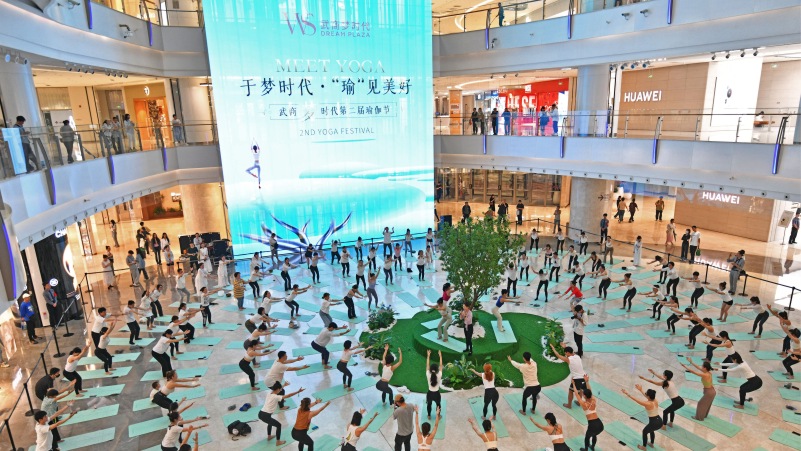

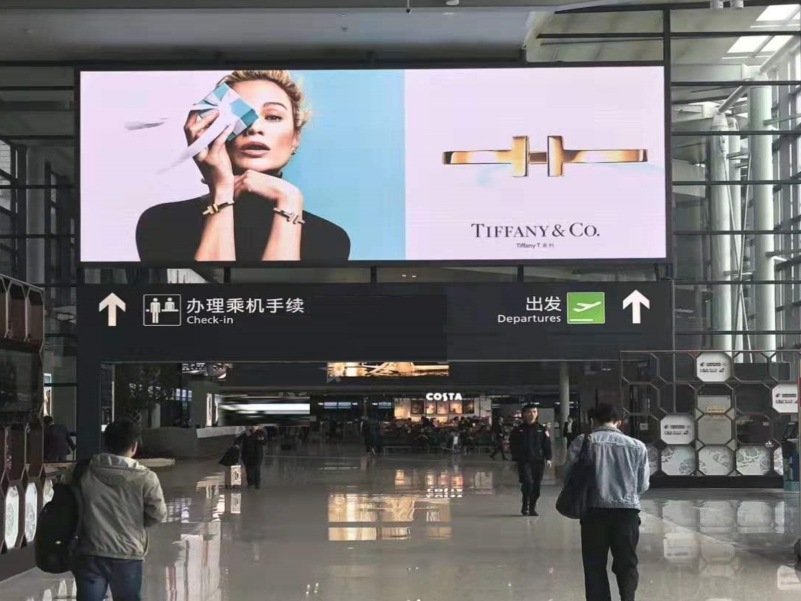
4. Exhibition hall/exhibition hall:
immersive vision + spatial interaction
Enterprise exhibition halls, museums, science and technology museums and other places are often equipped with immersive LED screen systems to create a panoramic digital environment. It can realize functions such as curved splicing, special-shaped splicing, interactive control, etc., to enhance the sense of technology in display.
Small pitch LEDs such as P1.25 or P1.56 are often selected to meet the needs of high-definition close-range viewing, and combined with multimedia systems to achieve content linkage.
5. Bar/KTV:
Atmosphere lighting + MV playback
In entertainment venues, KTV LED displays are used in conjunction with audio and lighting systems to play MVs, lighting effects, dynamic backgrounds and other content to enhance the entertainment atmosphere.
The screen needs to have a high refresh rate and color saturation to present a stable picture and avoid scanning lines during shooting. The commonly used spacing is P2.5 to P3.91, and the installation method is mainly wall-mounted in private rooms or stage background walls.
6. School lecture halls:
courseware display + multimedia interaction
LED displays are also rapidly applied in the education industry, used in multi-functional classrooms, lecture halls or stepped classrooms, replacing traditional projections, and supporting high-definition courseware display, video playback, blackboard interaction and other functions.
When selecting, attention should be paid to color reproduction and eye protection. P1.86~P2.5 spacing screens are often used in conjunction with smart teaching systems.
7. Medical institutions:
information release + guidance and queuing system
In hospitals, physical examination centers and other places, LED display screens are often used for information announcements, queuing guidance, department navigation and other purposes.
It is necessary to ensure that the information is updated in real time and the picture is clear and eye-catching. The content is mainly pictures and texts, and the brightness must be controlled in an appropriate range to avoid interference with patients.
8. Subway/airport/station:
guidance information + advertising release
In transportation hubs, LED screens are used to display real-time schedules, boarding instructions, security inspection reminders and commercial advertisements.
The equipment needs to operate stably for a long time and support remote control and scheduled updates. P2.5 or P3.91 full-color screens are commonly used, and customized installation design is required in combination with the on-site space.
Selection Guide for Indoor LED Displays
Faced with numerous LED display products, how to choose a suitable indoor LED display according to the usage scenario and budget? Especially today when small-pitch products are becoming more and more popular, it is crucial to clarify the selection logic.
The following five dimensions can help users quickly lock in the adaptation plan.
1. Select pixel pitch according to viewing distance
Pixel pitch (unit: mm) directly determines display clarity and viewing comfort.
In principle, “optimal viewing distance ≈ pixel pitch × 2~3 (meters)”.
The following are common spacings and recommended applications:
| Pixel Pitch | Recommended Viewing Distance | Typical Applications |
|---|---|---|
| P1.25 | Within 2.5 meters | Control rooms, exhibition halls, monitoring |
| P1.86 | 3–5 meters | Churches, meeting rooms, classrooms |
| P2.5 | 4–8 meters | Shopping malls, corporate lobbies, advertising |
| P3.91 | 6–10 meters | Stage rental, bars, KTV lounges |
The closer the distance, the higher the pixel density requirements, and small-pitch LEDs are more suitable for high-definition presentations.
2. Determine resolution, size and brightness based on the scene
Different scenes have different requirements. Conference rooms and monitoring centers require high resolution and low brightness; KTVs and exhibition halls have higher requirements for brightness and color impact.
The recommended brightness for commercial/display applications is 600~800cd/m².
For churches/conferences and other occasions, it is more eye-friendly to control it at 300~500cd/m².
For large information screens, standard ratios such as 16:9 and 4:3 are easier to connect to content sources.
The size of the LED screen is spliced by modules, and the aspect ratio can be customized. The overall visual effect should be planned in combination with the spatial layout.
3. Determine whether a curved or special-shaped structure is required
For occasions such as exhibition halls, museums, and brand windows that want to achieve a differentiated visual experience, consider using structures such as curved splicing, L-shaped corners, or columnar screens.
This type of design requires higher accuracy in the cabinet structure and module connection. It is necessary to confirm in advance whether the supplier supports customized structures and has relevant experience.
4. Fixed installation or rental use?
If used in long-term deployment occasions such as conference rooms and command centers, it is recommended to choose a fixed installation LED screen (fixed screen), which has a more stable structure and lower cost.
If it is used in stage performances, event tours, KTV rooms and other frequent disassembly and installation scenarios, a rental LED screen should be selected, which has the advantages of fast installation, anti-collision, and equipped with a flight box.

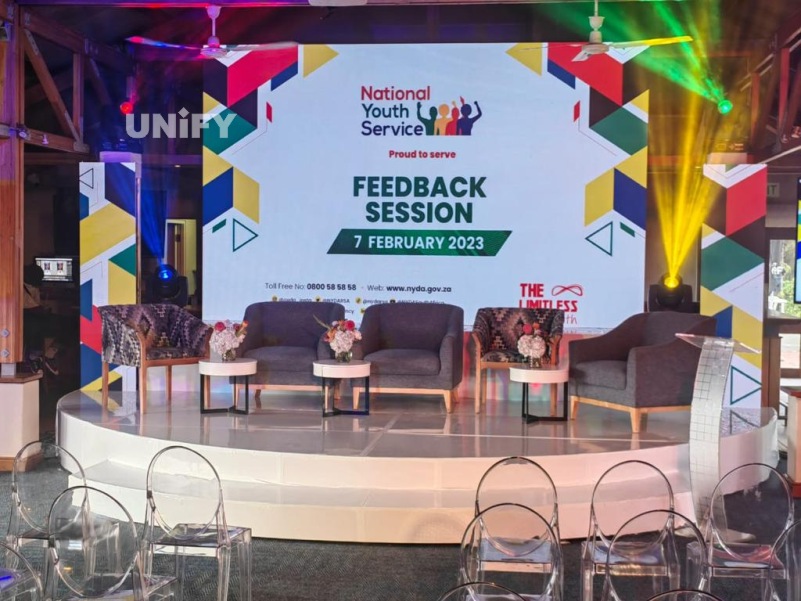
5. Maintenance method:
Full front maintenance structure:
modules, power supplies, and control cards can be disassembled and assembled from the front, suitable for wall-mounted places without rear channels
Front and back combined maintenance:
The structure is more flexible, suitable for areas with sufficient space, and has high maintenance efficiency.
Most small-pitch LED displays support magnetic front maintenance, which can effectively save maintenance space and improve engineering efficiency.
Magnetic indoor LED display
In scenarios with limited space, frequent maintenance or high requirements for overall visual aesthetics, magnetic LED screens have become the mainstream choice for modern fixed display projects with their advantages of “no screw disassembly and assembly, fast splicing and maintenance”.
Structural features: magnetic module + front maintenance design
The core structure of the magnetic LED display is:
The back of the module is equipped with a strong magnet, which can be firmly adsorbed on the box or structural frame without screw fixation;
Supports full front maintenance, and the module, power supply, receiving card, etc. can be removed from the front;
With a light and thin box design, it is suitable for a variety of installation methods such as wall-mounted, embedded, and column-mounted;
Modular design, support 1 person to complete disassembly and assembly, saving labor costs.
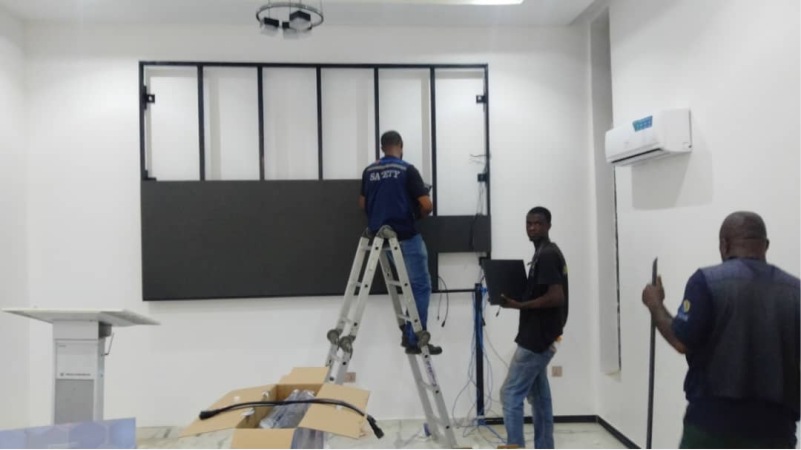
Advantage analysis: efficient, beautiful, and space-saving
The magnetic structure is not only synonymous with convenient installation, but also has significant advantages in many aspects:
Extremely fast maintenance: There is no need to dismantle the entire screen or the back structure, and the module can be sucked out from the front alone, which is suitable for small spaces;
Beautiful structure: No exposed screws, the front surface is flat and uniform, and the overall look is more modern;
Space saving: No rear maintenance channel is required, the screen can be directly attached to the wall, suitable for elevator halls, conference rooms, command centers, etc.;
High splicing accuracy: Uniform adsorption force ensures that the module and the box are tightly fitted, without seams or misalignment;
Strong disassembly and assembly repeatability: Repeated adsorption can still maintain stability and reliability, suitable for high-frequency maintenance projects.
Application series recommendation:
Ehonor / Ulight / Mi series magnetic screen-Lightweight energy-saving solution, cost-effective choices.
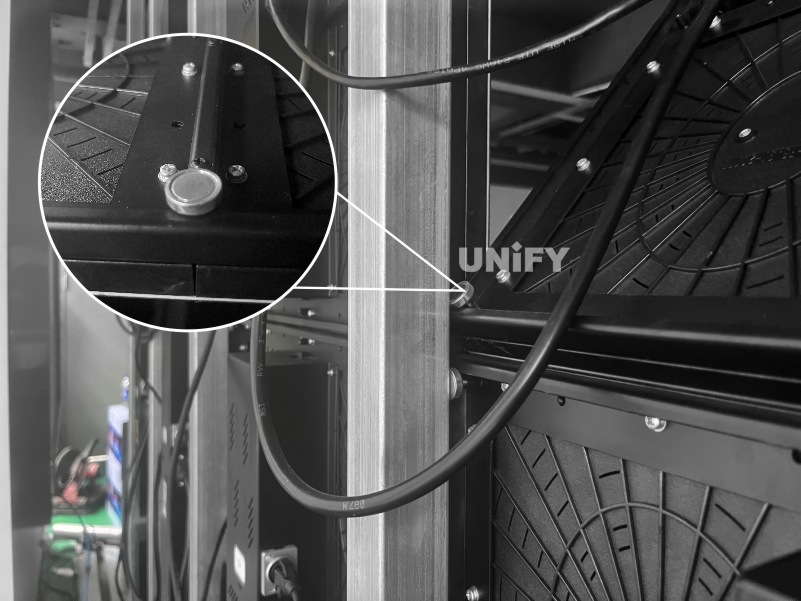
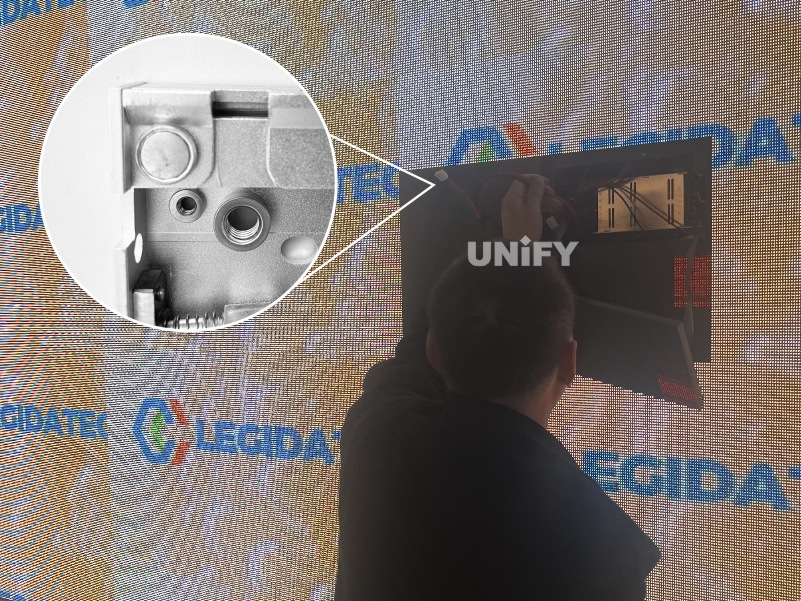
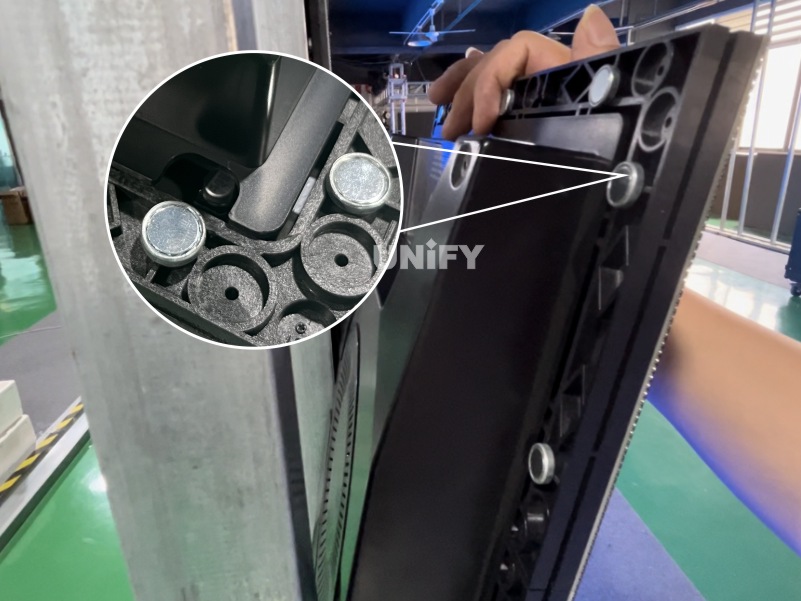
Technical comparison between COB packaging and SMD
With the increasing popularity of small-pitch LED displays, COB and SMD packaging technologies have become mainstream solutions. Understanding the technical differences and actual performance between them is critical for project selection and budget control.
1. Comparison of packaging principles: differences in structure and protection
SMD packaging (Surface Mounted Device) is to encapsulate red, green and blue LED lamp beads in a micro-chip and solder them on the circuit board. This is currently the most mature LED packaging method and is widely used in indoor and outdoor products with a pitch of P2.5 and above.
COB packaging (Chip On Board) is to encapsulate the bare LED chip directly on the PCB board, and then cover the whole with a layer of transparent protective material. Its structure is more compact and the surface is smoother, which effectively reduces the exposure of the lamp beads and improves the overall protection performance.
2. Advantages of COB packaging
Stronger protection: The surface of COB is covered with a resin layer, which has excellent anti-collision, dust-proof and moisture-proof capabilities, and is suitable for frequent use or crowded areas;
Higher integration: No exposed lamp feet, better overall flatness, and less likely to have “bright spots” or “black spots”;
Higher heat dissipation efficiency: The chip is in direct contact with the PCB, which is conducive to heat conduction and prolongs the service life;
Lower maintenance frequency: The package is more compact, the structure is more stable, and it is not easy to fall off or damage, especially suitable for small-pitch high-density scenarios (such as below P1.25).

3. Advantages of SMD packaging
Mature technology: After years of market verification, the process is stable and the yield is high;
More controllable cost: Suitable for large-scale mass production, P2.5 and above products have more advantageous prices;
More convenient maintenance: Modular design, lamp beads, modules, and power supplies can be quickly replaced, and the maintenance threshold is low;
Balanced picture quality: The display effect is stable and suitable for most commercial application scenarios.

4. Recommended application scenarios
If used in high-density, high-definition, close-range display environments such as exhibition halls, conference rooms, and monitoring centers, it is recommended to choose a COB-packaged small-pitch LED screen (such as P0.9, P1.25), which has finer picture quality and higher stability.
If used in shopping malls, churches, event rentals, advertising broadcasts and other occasions with medium viewing distances, SMD-packaged LED displays (such as P2.5, P3.91) are preferred, which are cost-effective, simple to maintain, and flexible to install.
Indoor LED Display Control system
UnifyLED launches various indoor LED display products, widely support the industry’s mainstream control systems, to meet the diverse use needs from small conference screens to large command centers.
We always emphasize the stability, compatibility and ease of use of the system to ensure that users are efficient and at ease in daily operations.
NovaStar:
a world-renowned brand, suitable for fixed installation and rental, with comprehensive functions and strong reliability;
Colorlight:
widely used in small-pitch screens and special-shaped structures, with outstanding color management capabilities;
Kystar:
cost-effective, supports multi-screen processing, suitable for commercial display and central control platform docking. Expand according to indoor LED display screen

Why choose UnifyLED as your indoor LED display supplier?
Among the many LED display factories in China, choosing an experienced, guaranteed, one-stop service partner can truly maximize the value of the project.
As a professional indoor LED display supplier and OEM/ODM manufacturer, UnifyLED has won the trust of a wide range of customers with its product quality, service system and global implementation capabilities.
 Rich experience in project implementation at home and abroad, trustworthy
Rich experience in project implementation at home and abroad, trustworthy
UnifyLED has more than ten years of export experience, and its products are exported to Europe, America, the Middle East, Latin America, Southeast Asia and other regions. The service objects cover churches, shopping malls, exhibition halls, schools, command centers and other industries.
We not only provide products, but also deliver complete solutions – from project consultation, drawing design, to remote guidance installation, commissioning and delivery, every detail is aimed at customer satisfaction.
 Perfect after-sales system, so that there is no worry about cooperation
Perfect after-sales system, so that there is no worry about cooperation
The whole screen warranty is 2~3 years, and extended warranty service is supported.
Free spare parts of common accessories are shipped with the screen to ensure fast replacement.
Technical support responds quickly, providing video guidance and remote assistance.
Global logistics support to assist customers in cross-border transportation and customs clearance.
Regardless of the size of the project, we ensure that the entire process of pre-sales, sales, and after-sales is seamlessly connected, providing a worry-free experience for contractors and end customers.
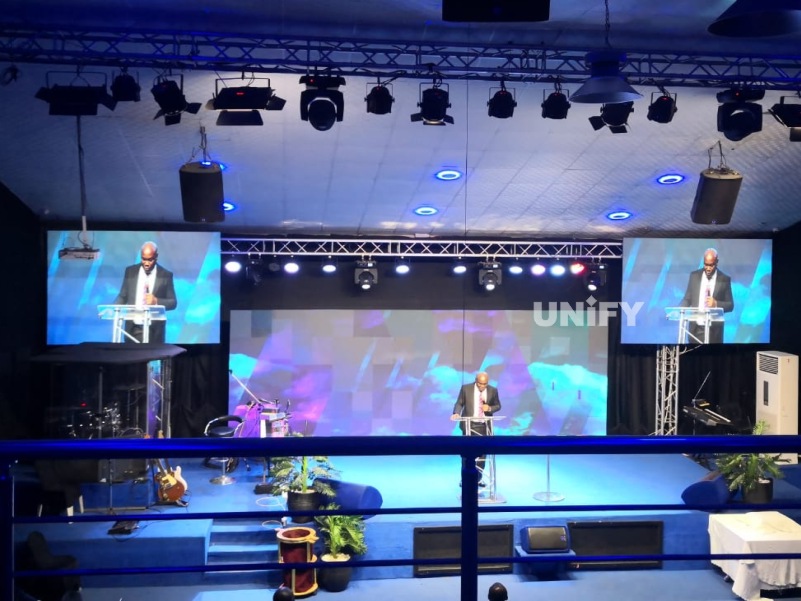
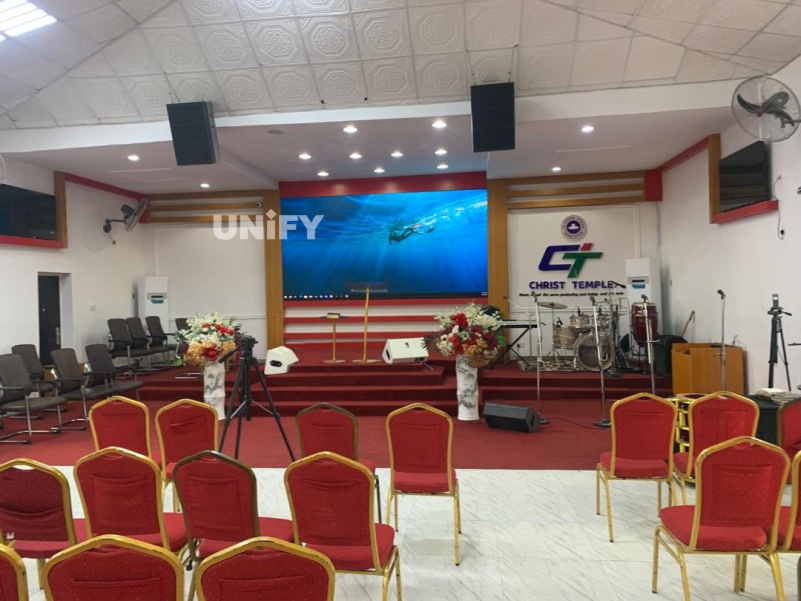
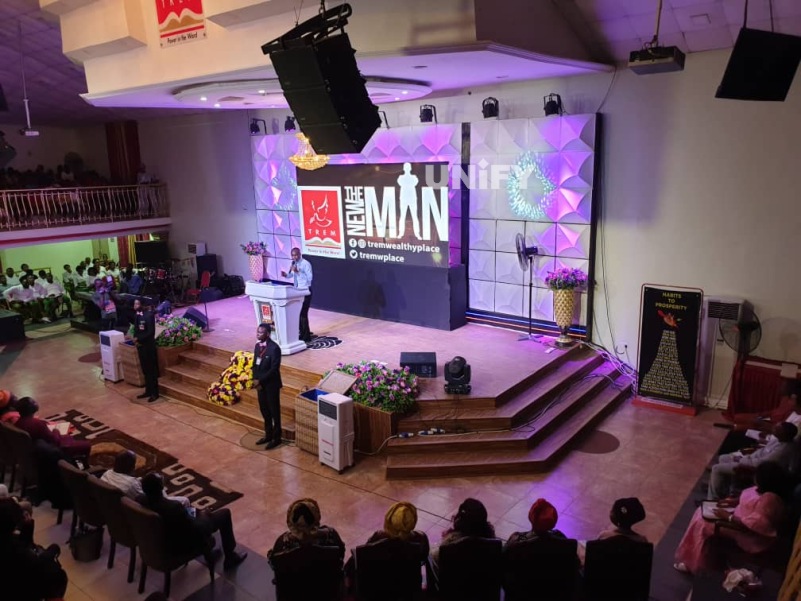
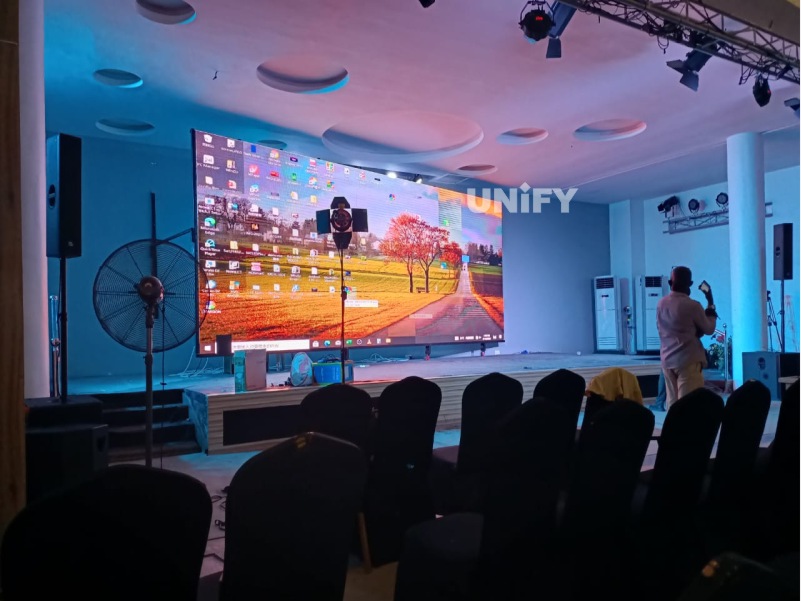
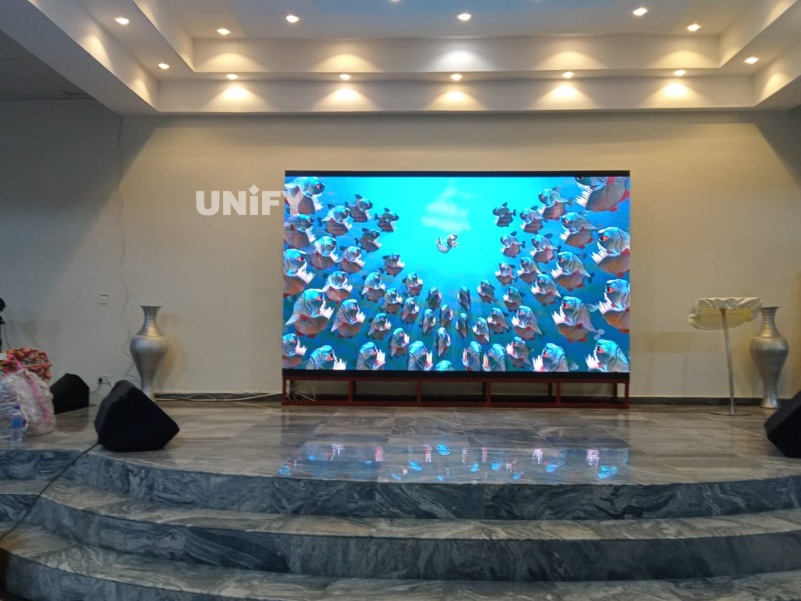
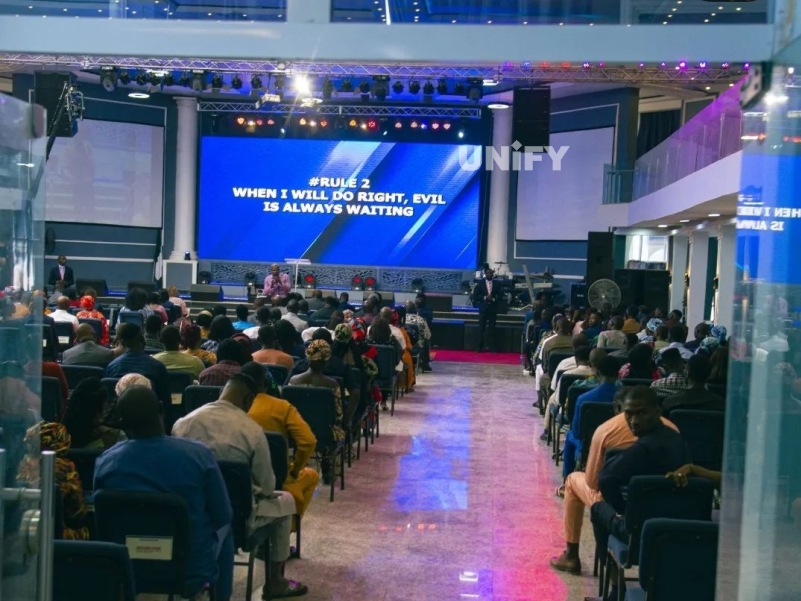
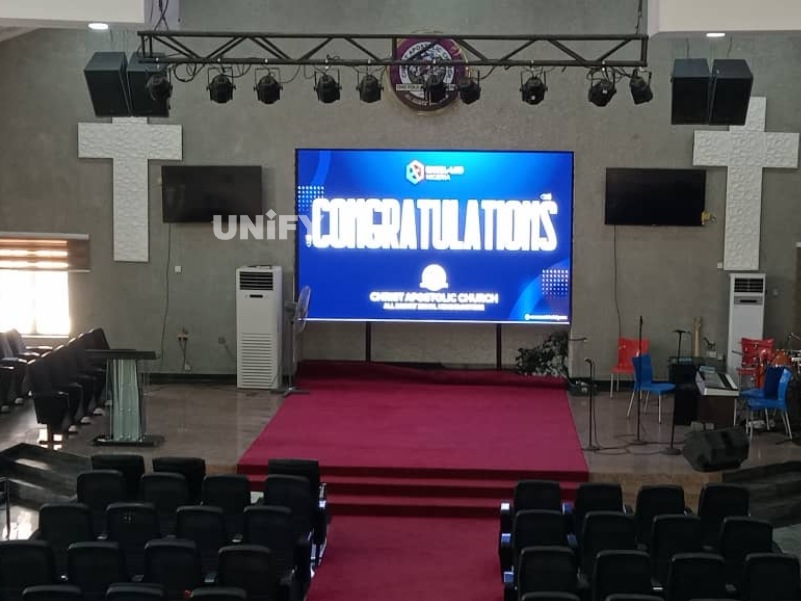
 Provide customized services and content platform support
Provide customized services and content platform support
UnifyLED can provide the following according to customer needs:
Full customization of screen size, box structure, control system, etc. (OEM/ODM).
Exclusive LOGO, packaging, software interface customization, support brand output.
Supporting content management system (CMS) and split-screen control software to improve content operation efficiency.
Multilingual documents and localized interfaces are convenient for global customers to use.
Whether you are an contractor, distributor or brand terminal, UnifyLED can tailor the most suitable product and service system for you.
Summary
When purchasing indoor LED display screens, do not blindly pursue high resolution or over-stack parameters. Clarifying project requirements, matching reasonable parameters, and choosing a strong manufacturer are the correct paths to maximize investment returns. Suitable is the best choice
Do not blindly pursue high resolution, and ensure that stability and applicability are equally important.
Small-pitch LED is a trend, but more attention should be paid to technical maturity and later maintenance costs.
Choose UnifyLED’s one-stop scenario solution, which is more time-saving, professional, and controllable.
